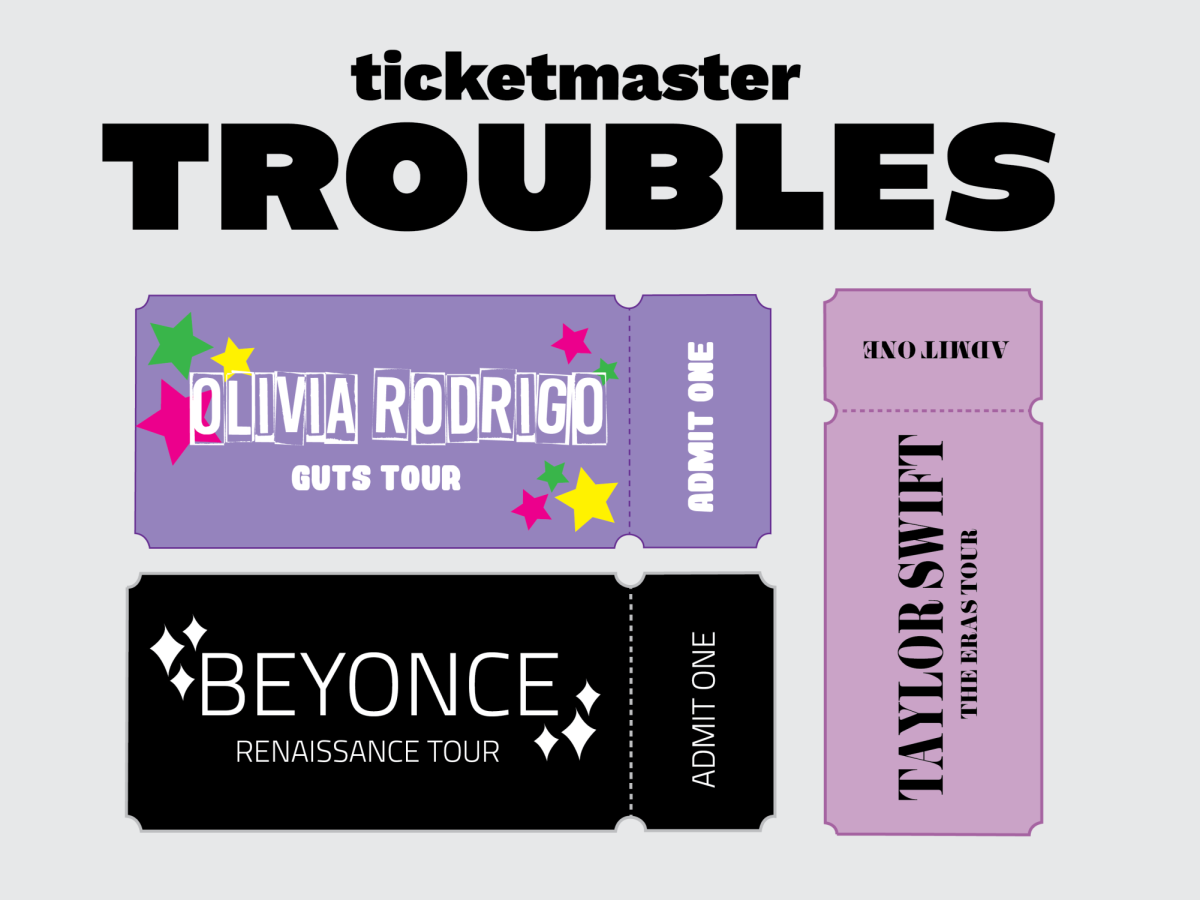In the retail industry, items ranging from clothes to toys to shampoo are divvied up and shrouded in pinks and blues. Products are given names such as “Cristal for Her” BIC pens and Yogi’s “Men’s Tea” and “Women’s Tea.”
Axe made a grenade-shaped black loofah and named it the “Axe Detailer Shower Tool.” In big-box stores such as Walmart, customers appear quite discerning as to whether their products apply to their gender, but what if neither gender applies?
“I like dressing femininely and masculinely,” said Ezra Parker, a 21-year-old who identifies as gender-fluid and uses “they” pronouns. “I basically just shop; I see everything as fair game.”
Parker identifies as non-binary, a growing group of people who do not conform to “male” or “female” standards of appearance. Products such as those mentioned above are designed according to the assumption that a person fits in one of the two categories, but Parker does not allow their clothes to define them.
“People probably think that because I’m dressing more femininely that day, it means that I feel more like a girl,” Parker said. “How I dress doesn’t affect my gender at all.”
In fact, many leaders in fashion seem to share the same sentiment. Gender-neutral clothing lines have emerged from the likes of Rick Owens, Kimberly Wesson, and Alessandro Michele. These lines, inspired by David Bowie and Alice Cooper, helped introduce the idea into the mainstream. Louis Vuitton even enlisted Jaden Smith, the son of the actor Will Smith, as the new face of their women’s wear section, but that does not change the gendered nature of most clothes. Stores are even making the shopping experience more friendly to all gender identities: Target, whcih stopped using gender to label toy aisles in August 2015, made recent headlines by changing its policies to allow transgender and nonbinary people to use the bathrooms in which they feel more comfortable.
Parker, who uses the singular “they” pronoun, said that they felt uncomfortable in men’s clothing because of the way their body fits in them.
For most of fashion history, clothing has been tailored to accentuate aspects associated with the gender to which it’s marketed. These alterations range from extremes, such as cod pieces and corsets, to ordinary designs that focus on showing men’s abs or women’s breasts. However, what was often thought to be masculine and feminine have changed over time. This evolution can be seen in the popularity of shoulder pads for ‘80s business women and how both boys and girls would wear dresses as babies, before World War II.
“I don’t think that there’s a point to having gendered products,”
said Lydia Mason, 17-year-old co-president of the feminist group Girl Up at duPont Manual High School. “They usually serve the same purpose, but they just have different packaging or scents. The difference should be determined by the user rather than it being designated to them beforehand.”
However, certain companies may resist changing these products . One of the ways companies can benefit from gendered products is the “pink tax,” which is when companies increase the cost of a product if it’s marketed to women, as opposed to men or all genders. Examples range from Schick razors being priced $14.99 for men and $18.49 for women, to Radio Flyer scooters being priced at $24.99 for boys and $49.99 for girls, despite the only difference being a paint job.
“Women spend more money on something they could’ve gotten cheaper had the pressure to purchase based on gender not been present,” Mason said.
In recent years, parents have argued over how to determine what toys and clothes they should buy for their impressionable children. The National Association for Education of Young Children found that girls’ toys were generally associated with beauty and domestic skills; boys’ toys were violent, competitive and dangerous. Those that promoted education, art, physical, musical and cognitive skills were neutral or slightly masculine.
Children have to tolerate whatever clothes or toys their parents buy them, but as they grow older, they can choose products that align more with them and how they view themselves. Blofish is a NuLu business that sells entirely gender-neutral clothing for people who don’t fall within the gender binary or prefer non-gendered apparel. Their slogan, “All 4 All,” is the “belief that everyone should have the same opportunities in life, no matter your gender, race, sexual preference, religious beliefs, or abilities.”
Diaper Fairy in the Highlands is a “baby boutique” and a service that provides cloth diapers and other items to parents in Louisville. Emily McCay is the proprietor of this small business, which has expanded over the past few years.
“I go out of my way to find unisex or gender-neutral products,” McCay said. “I would say that, in my store, the products are about 50 percent gender-neutral, 25 percent for boys, and 25 percent for girls.”
McCay often worries about the messages some toys impart to her daughter.
“As a parent myself and as someone who owns a store, I believe in trying to provide a range of different-style toys and of different-focus toys,” McCay said. “And even different-colored clothes, so that my daughter, for example, doesn’t just walk around wearing bows and pink and sparkles and only playing with dolls, so that she kind of has a whole range of what it is to be a human and not just to have these and be defined as a girl.”
Still, McCay offers certain products for parents who do want gender-specific items, as not all of them feel the same way as her. She places non-gendered products up in the front, because if a parent really needs gendered products, they’re willing to look for them.
“I try, whenever possible, to provide a gender-neutral option,” McCay said. “But, at the same time, there are people who shop with me who are very gender-specific and gender-biased and want those products. So I have the opportunity to provide kind of a focus for the customers while still trying to remain gender-neutral.”
Logan Manford, founder of Blofish, feels similarly about providing a gender-neutral option.
“A lot of companies are so ingrained in what they’ve been doing for the last 30, 40, 50, 60 years that it’s going to be tough for them to transition their whole product line without an extremely open mind,” Manford said. “And I think that’s where we have an advantage. We’re starting out now, we have our message on the wall; we know where we are, we know where we’re going, and it’s basically ‘All 4 All’.”
Words by: Karac Medley and Kim Le








